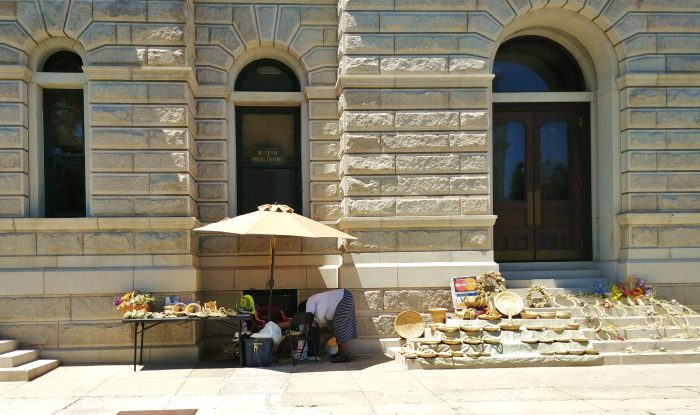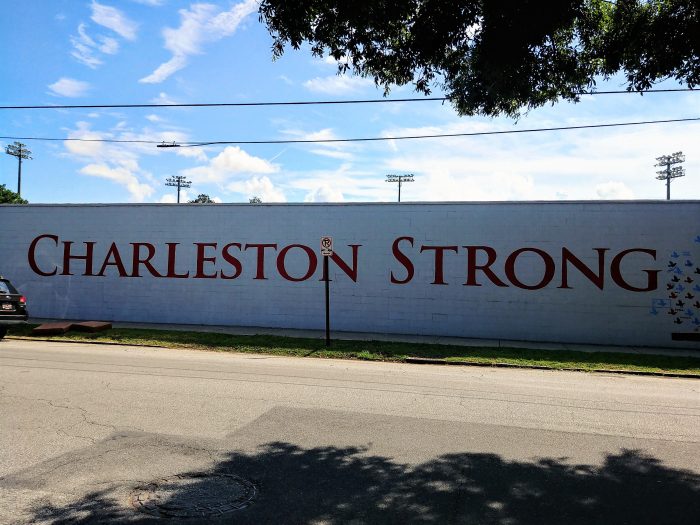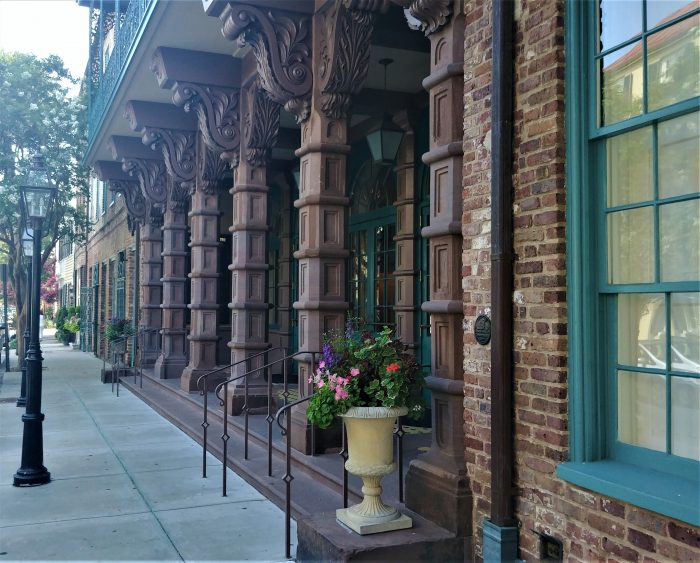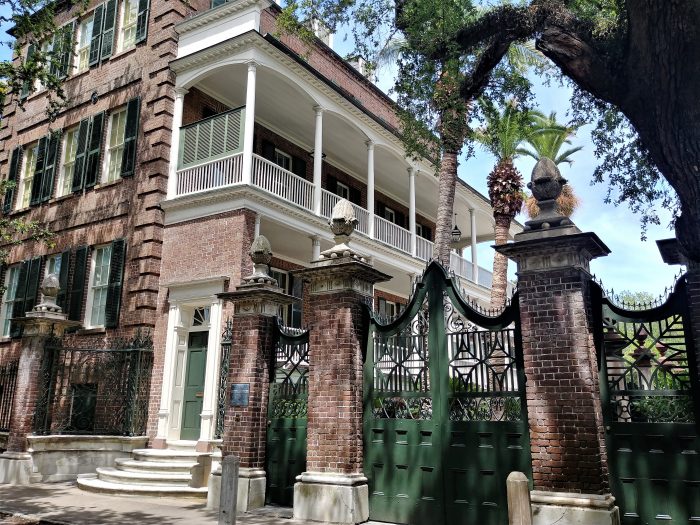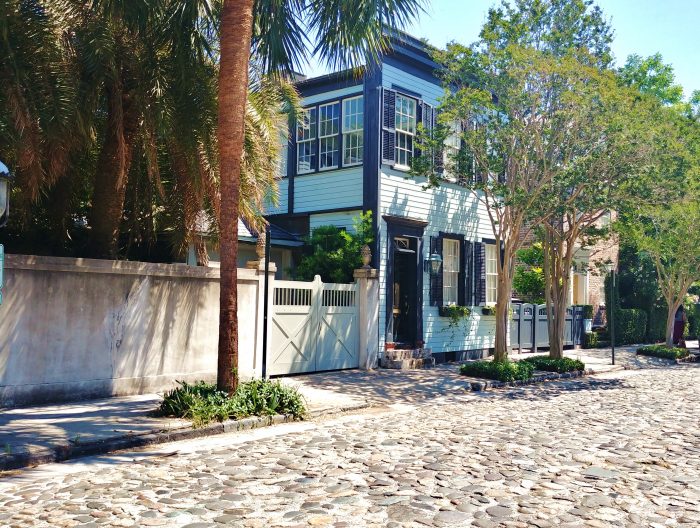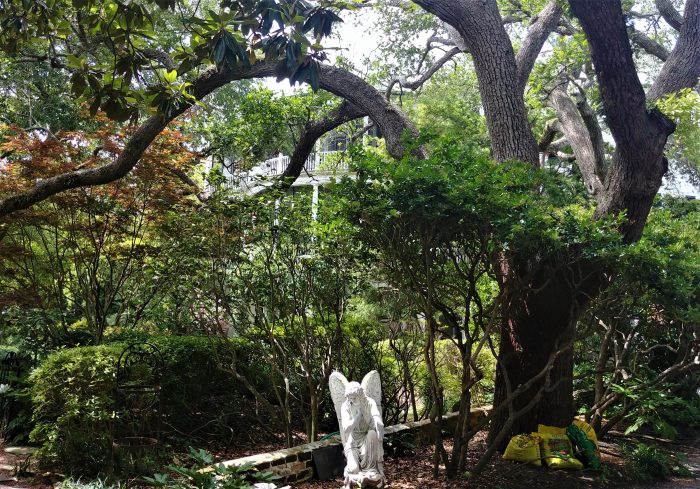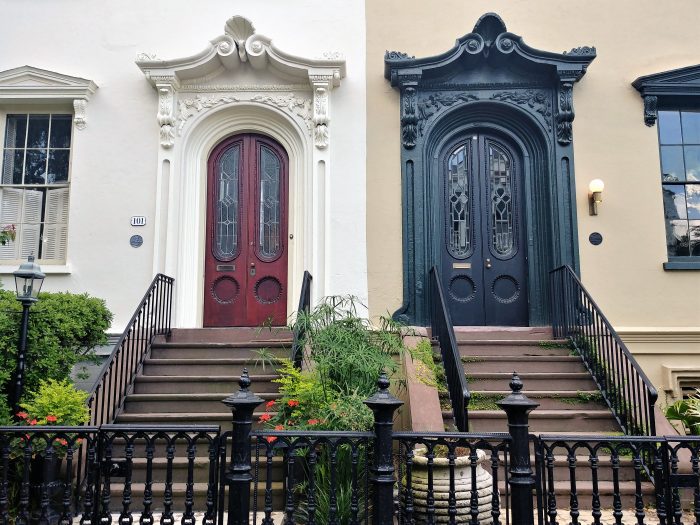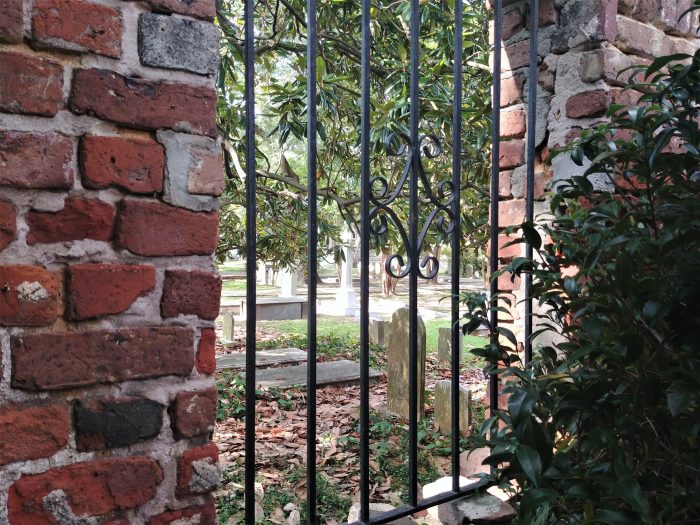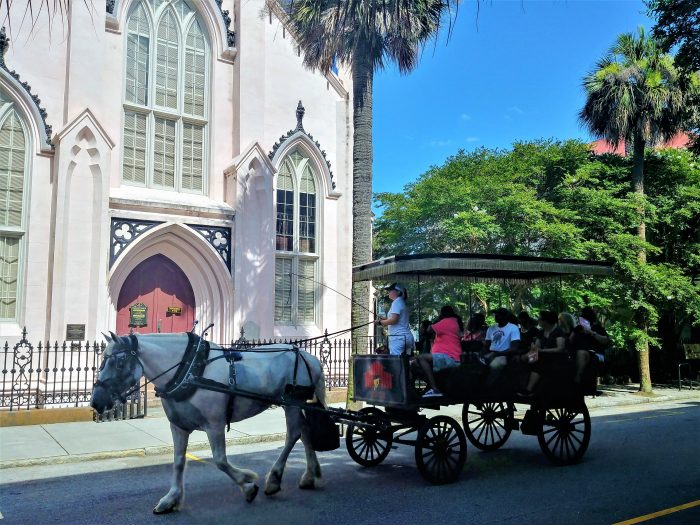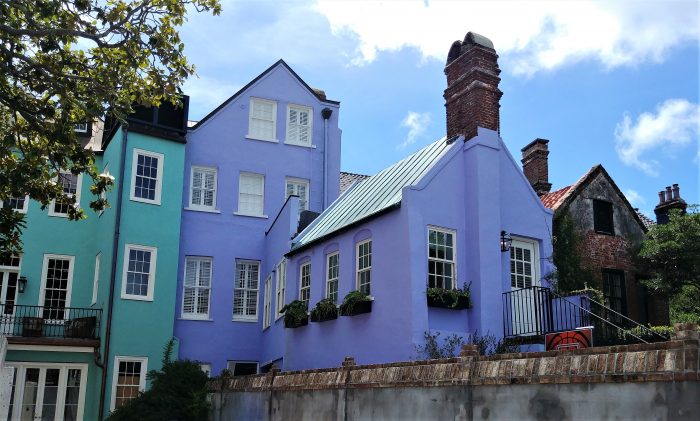The wonderful Sweetgrass baskets you can find sale in downtown Charleston have been around for centuries (the skill was imported with the enslaved Africans). Originally they were made from bulrush or needle rush, but in the 1900’s the materials being used changed and Sweetgrass became the plant of choice — due to its greater flexibility, pretty color and wonderful smell. While still utilitarian, they have come to be treated as the works of art that they are.
Charleston Is Strong
A statement put up after the 2015 shooting at the Mother Emanuel AME church, this wall is also covered with lots of doves. The wall is the outside of College Park, an old baseball field, on Rutledge Avenue — where it creates the border for Hampton Park.
Dock Street
The beautiful entrance to the Dock Street Theatre. In 1736, the Dock Street was the first theater built in America. That building, however, was destroyed — likely by the Great Fire of 1740. The current building, erected on the same site, was the Planter’s Hotel — which was later restored for the theater.
Welcoming Gates
The Simmons-Edwards House on Legare Street is one of the most spectacular houses and properties in Charleston. It is more popularly known as the Pineapple Gates House, for obvious but inaccurate reasons. The “pineapples” are actual stylized Italian pine cones. But, pineapples would be good too, as they symbolize “welcome” or “hospitality.”
A Cobblestone Scene
Chalmers Street, home to this beautiful scene, is probably the most famous of all Charleston cobblestone streets. It is, however, just one of the eight you can find in downtown Charleston.
A Grounded Angel
This earthbound angel, being lit by a ray of sun penetrating the shade from the beautiful live oak tree, can be found on Gibbes Street — with the Parker-Drayton House looming in the background.
Oh So Close
These almost twin doors are part of Bee’s Block, which is a stretch of connected houses on Bull Street. There is another pair on the block as well. They’re all gorgeous and a pleasure to see every time you go by.
Framed
Charleston is full of fascinating graveyards, some of which date back long before the United States became an independent country. The remains of a dependency building on Queen Street frames a view into the Circular Church’s graveyard, which is thought to be the oldest English burial ground still in existence in Charleston (it’s earliest unmarked grave dates back to 1695). It’s quite a view.
The Huguenot Church
The French Huguenot Church in downtown Charleston is one of the oldest congregations in the city, with its first church being built on this site in 1687. While there have been a number of other church buildings, the one standing today was completed in 1845. Services used to be held in French, but that now only occurs once a year. Pretty cool.
The Other Side of the Rainbow
If you think about it, every rainbow must have a front and back side (depending on your perspective). But Rainbow Row definitely does — and this is the backside of some of those famous antebellum row houses. If you go down Elliott Street, you get a perspective most folks never see.
- « Previous Page
- 1
- …
- 95
- 96
- 97
- 98
- 99
- …
- 188
- Next Page »
